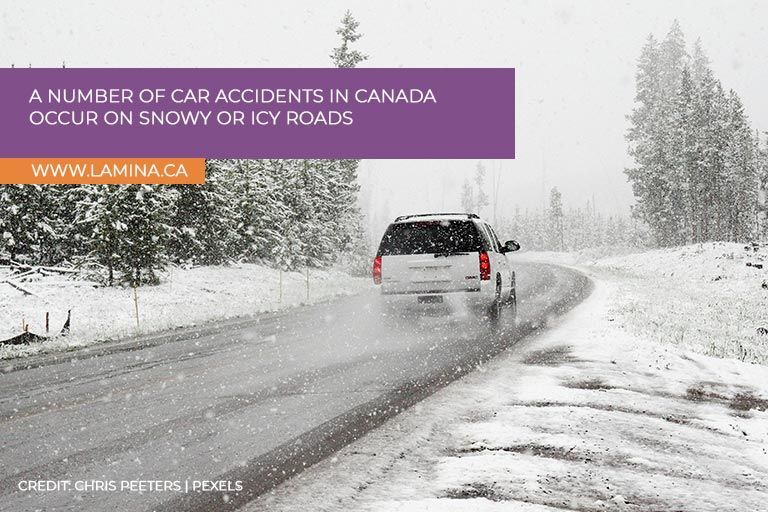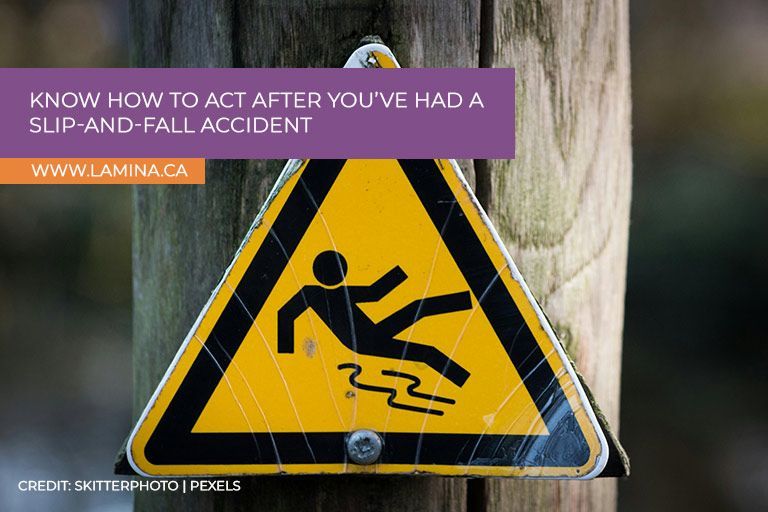Winter's frosty grip can be delightful, blanketing the world in a pristine white and igniting the spirit of cozy nights and festive cheer. However, this wonderland also comes with hidden dangers. The treacherous combination of snow, ice, and freezing temperatures creates prime conditions for slip-and-fall accidents. These incidents can range from minor inconveniences to life-altering injuries, leaving you with unexpected medical bills and a disrupted routine.
The good news is that winter falls are largely preventable. By taking proactive measures and knowing what to do in case of an accident, you can turn a potentially disastrous season into a safe and enjoyable one.
Winter Hazards You Should Be Aware Of
According to the
Workers' Safety and Compensation Commission (WSCC), “Nearly 30% of car accidents in Canada happen on snowy or icy roads.” The most deceiving culprit is often
black ice. This transparent layer forms when water freezes on a seemingly dry surface. Its invisibility makes it incredibly dangerous, as unsuspecting pedestrians might walk right onto it. Be especially cautious on shaded areas, bridges, and recently cleared sidewalks where black ice is more likely to form.
Snowfall can mask uneven surfaces like curbs, potholes, and cracks in the pavement. These hidden obstacles can trip you even on seemingly even ground. Pay close attention to your footing, especially when the snow is deep.
Walking through snowdrifts can be more tiring than anticipated. The uneven terrain coupled with reduced visibility can easily lead to a loss of balance and a fall. When navigating snowdrifts, take small, deliberate steps to maintain stability.
Winter Slip and Fall Prevention Tips
Prevention is always better than cure. Here's what you can do to minimize your risk of a winter slip and fall:
Invest in sturdy winter boots with good traction. Look for soles with deep treads that provide a strong grip on icy surfaces. Avoid smooth-soled shoes or boots, as they offer minimal slip resistance.
Layer up in warm clothes that allow for free movement. Avoid bulky clothing that restricts your range of motion and can contribute to clumsiness.
Winter is not the time to rush. Walk slowly and deliberately, taking shorter and more controlled steps. This allows you to react more quickly to unexpected changes in the terrain.
- Be Aware of Your Surroundings
Don't walk while texting or talking on the phone. Pay close attention to where you're placing your feet and be mindful of potential hazards around you.
Use handrails for support when climbing stairs or walking uphill. This provides additional balance and stability.
Keep your walkways and driveway free of snow and ice. Regularly shovel snow and apply de-icing salt or sand to create a safer walking surface for yourself and others.
Be cautious when entering buildings from outdoors. Wet floors due to tracked-in snow can be surprisingly slippery. Look for warning signs placed at entrances and wipe your shoes thoroughly before venturing further inside.
Additional Considerations
Older adults and individuals with balance issues are more susceptible to falls. Consider using a cane or walking stick for additional support if needed.
During snowstorms or periods of low light, wear
reflective clothing or carry a flashlight to improve your visibility to others.
What to Do If You Slip and Fall
Even with the best precautions, accidents can happen. Here's what to do if you find yourself slipping and falling:
Falling can be startling, but panicking can make the situation worse.
Take stock of your injuries. If you can get up safely and experience no pain, then great. However, if you're in pain, don't attempt to move. Call for help immediately.
Avoid getting up immediately. If you feel pain, stay still and call for help.
- If someone is nearby: Ask them to call for help by dialing 911 for emergencies or a medical professional.
- If you are alone: Try to crawl to a safe location where you can call for help on your phone. Utilize emergency services or contact a trusted friend or family member.
Once you're in a stable position, assess yourself for injuries. Look for signs of bleeding, swelling, or deformity.
Even if you initially think you're uninjured, it's always best to consult a medical professional. Sometimes, internal injuries may not become apparent immediately.
If possible, take pictures of the scene of the fall, including the hazardous conditions that may have contributed to it.
If you fell on someone else's property, report the accident to the property owner or manager. This is crucial if you intend to pursue any legal recourse later.
Financial Considerations
Winter slip and fall accidents can have a significant financial impact. Medical bills, rehabilitation costs, and lost wages due to missed workdays can create a financial burden. Let's explore your options:
If you have health insurance, understand your coverage for slip and fall injuries. This will help you budget for any out-of-pocket expenses. Additionally, consider if you have disability insurance that may provide income replacement if work becomes impossible due to injury.
If you believe the fall was due to someone else's negligence, you may be able to file a liability claim. This is best handled by consulting with a personal injury lawyer specializing in slip and fall cases. They will assess the specifics of your accident and advise the best course of action.
- Financial Aid Alternatives
Medical bills can quickly become overwhelming. If you find yourself needing financial assistance, consider exploring responsible
payday loan alternative services online offered by reputable companies.
Why Trust Financial Aid From Lamina







